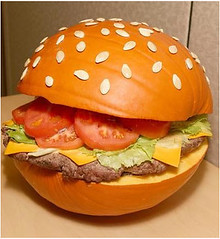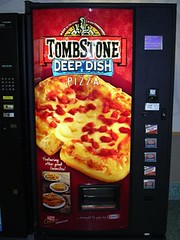This guest post comes from Alvina Lopez, who is pursuing a journalism degree from Ashford College and blogs on the topics of accredited online colleges. Below, she writes on her cafeteria experience from her undergrad days at Rice University, including the shift to traylessness.
—
As any college student knows, the cafeteria is a central locus of student interaction. It’s where we congregate to share the latest gossip, to commiserate over grades, and to just talk about what matters to us. It’s also where most students living on-campus consume their meals. At my own college cafeteria, the food wasn’t always great, but there were options aplenty–the carnivore section, the vegetarian section, the hamburger/pizza/fries section, the cereal dispensers, the salad bar, and so on. This abundance of choice astounded me when I first started school as a freshman.
Armed with a tray and an appetite, I’d navigate through the various sections, picking what looked good or at least smelled good. Something I noticed was that there are three very distinct types of eaters those who’d go straight for the same thing every day like pizza, those who’d inspect their food carefully before setting it on their trays, and those who’d grab a sampling of pretty much everything, the merits of which would be decided upon being seated. The latter was by far the most popular method of food selection. It was easy enough, as the trays provided ample space to fit everything.
But the waste I witnessed was astounding. By the time dinner was over, trashcans were filled with uneaten food. Since my father is a farmer who comes from a long line of family farmers, food waste was always considered a sin at home. I can’t even count the number of times my father would say how important it was to finish everything. I think being more intimately acquainted with where the food came from that it takes money and hard work to bring what we eat to the table, no matter where we buy it made my family understand and respect its importance more. Seeing all the waste at college thus came as a huge culture shock.
Read More »
 of 6 ounces per person per meal.
of 6 ounces per person per meal. We can cook with their innards.
We can cook with their innards. The war timeframe explains the use of the term “enemy alien servants,” who we can assume were from the nations not aligned with the U.S. in WWI. We’ll never know for sure whether this hired help was deliberately wasting food as a form of sabotage, but it seems like an odd tactic.
The war timeframe explains the use of the term “enemy alien servants,” who we can assume were from the nations not aligned with the U.S. in WWI. We’ll never know for sure whether this hired help was deliberately wasting food as a form of sabotage, but it seems like an odd tactic. Pretty soon, though, fruits displayed toward the top will get a luxurious ride down to the bottom in…an elevator. Hey, if grain gets elevators, why not fruit?
Pretty soon, though, fruits displayed toward the top will get a luxurious ride down to the bottom in…an elevator. Hey, if grain gets elevators, why not fruit?